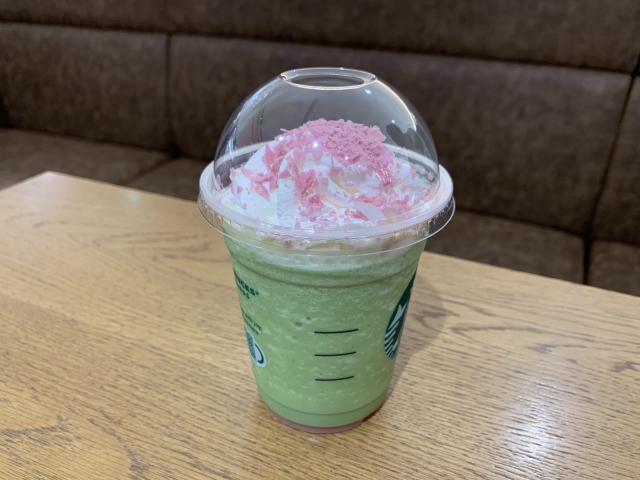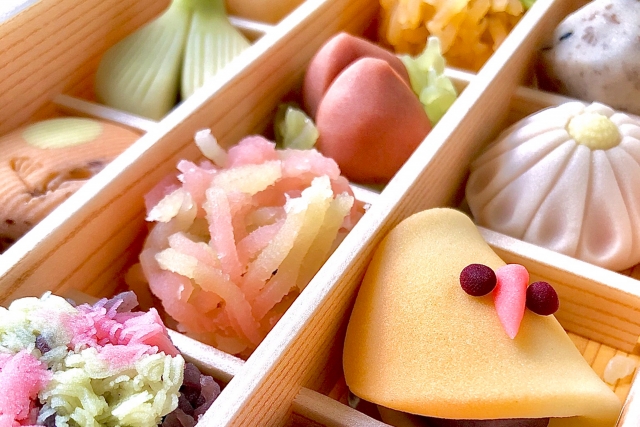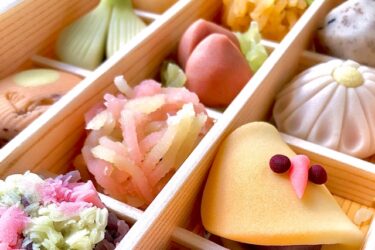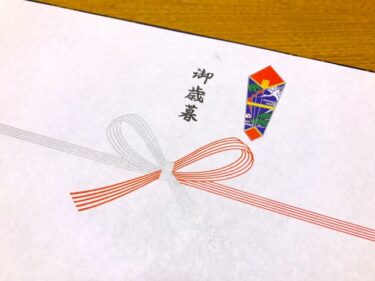If you’ve spent any time in Japan, you’ve likely noticed the abundance of seasonal products, from fast food items and drinks at cafes to traditional sweets. Every season brings a fresh wave of limited-time offerings, often tied to seasonal ingredients like chestnuts and sweet potatoes in autumn or sakura-flavored treats in the spring. This tradition isn’t new—it has its roots in Japan’s long-standing appreciation for the changing seasons, a concept that is deeply embedded in Japanese culture and reflected in its culinary world, including traditional sweets. But why are these products only available for a limited time? In this article, we’ll explore the cultural and historical reasons behind Japan’s love for seasonal items.
The Tradition of Seasonal Sweets in Japan

Seasonal products in Japan are not a modern trend—they are part of a cultural tradition that dates back centuries.
- Seasonal Ingredients in Traditional Sweets: In Japan, the seasons are celebrated through food, especially in the world of traditional sweets, or “wagashi.” Each season has its own distinct ingredients and flavors. For example, in spring, sweets made with sakura (cherry blossoms) or yomogi (mugwort) are common, while in autumn, chestnut and sweet potato flavors take center stage. These seasonal treats are often beautifully crafted to resemble seasonal flowers or landscapes, offering not just a delicious taste but also a visual representation of the time of year.
- Limited Availability: One of the defining features of these seasonal sweets is their short availability. Sakura mochi, for example, is typically sold during the cherry blossom season and disappears from stores as soon as the blossoms fall. Similarly, kashiwa mochi, a sweet traditionally eaten during Children’s Day in May, is only available around that holiday. This limited availability makes the treats feel special, something to be enjoyed while the season lasts.
Modern Seasonal Products in Japan
Today, this appreciation for seasonal flavors has expanded beyond traditional sweets and is now seen in fast food, cafes, and even snacks.

- Fast Food and Cafes: Major food chains in Japan, like McDonald’s or Starbucks, regularly introduce seasonal menus. In autumn, for instance, you might find pumpkin-flavored drinks or sweet potato fries on the menu, while spring brings sakura-flavored lattes and desserts. These limited-time offers create excitement and urgency, as people rush to try these special items before they disappear.
- Snacks and Packaged Goods: Japanese convenience stores and supermarkets are also filled with seasonal snacks. From chocolate bars infused with chestnut flavors to ice cream with seasonal fruits, there’s always something new to try. Much like traditional sweets, these modern seasonal items are often only available for a few weeks, creating a sense of novelty and anticipation with each new season.
The Cultural Importance of the Seasons
Japan’s obsession with seasonal products is deeply tied to its cultural appreciation for nature and the changing seasons.
- Mono no Aware: The concept of “mono no aware” refers to the transient nature of life, often symbolized by the changing of the seasons. This appreciation for the fleeting beauty of nature is reflected in Japanese food culture, where seasonal ingredients are prized. Seasonal products allow people to savor a particular moment in time, much like admiring the brief bloom of cherry blossoms.
- Connection to Nature: Japan’s distinct four seasons play a major role in shaping the country’s food culture. The practice of using ingredients at their peak not only enhances the flavor of food but also strengthens the connection to the natural world. Seasonal products remind people to enjoy the current moment and look forward to the changing landscape and tastes.
A Special Taste of the Season
Japan’s love for seasonal products, from traditional sweets like sakura mochi and kashiwa mochi to the latest seasonal drinks at cafes, is rooted in the country’s deep appreciation for the changing seasons. These limited-time items not only offer a unique taste experience but also remind people of the beauty of fleeting moments. For foreigners living in Japan, understanding the cultural significance of seasonal products can provide a richer appreciation for this aspect of daily life in Japan.








